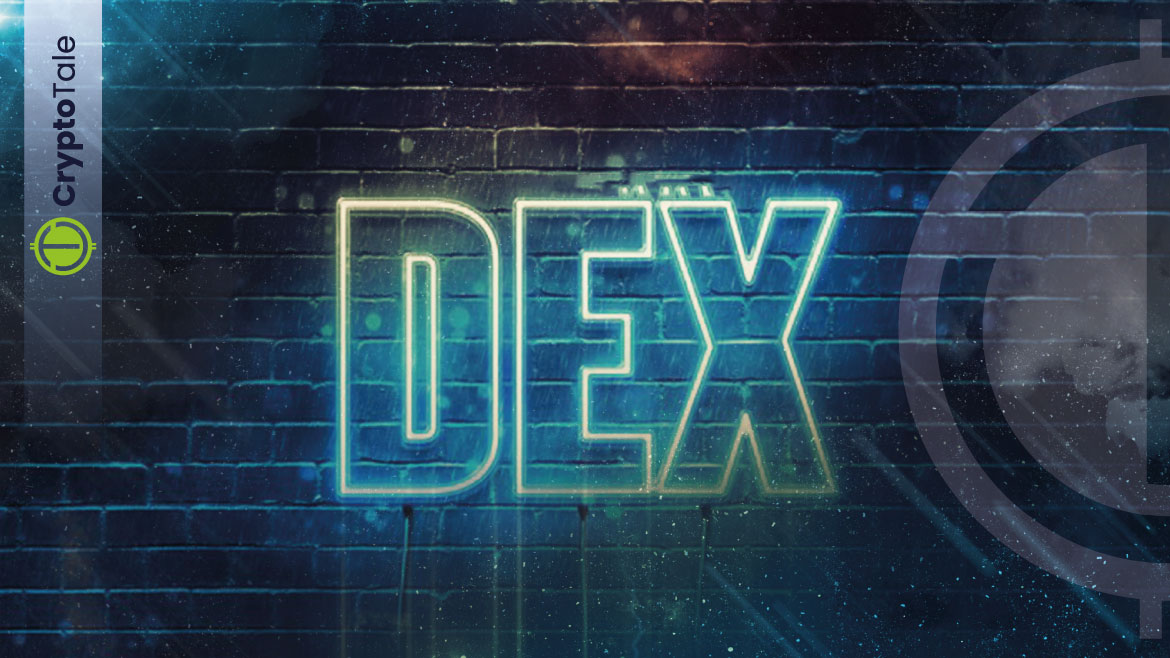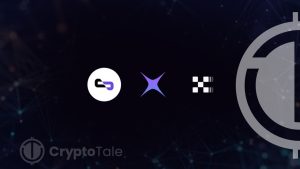
Decentralized exchanges, also known as DEXs, are peer-to-peer marketplaces where cryptocurrency traders make transactions directly without handing over management of their funds to an intermediary or custodian. These transactions are facilitated through the use of self-executing agreements written in code called smart contracts.
DEXs were created to remove the requirement for any authority to oversee and authorize trades performed within a specific exchange. Decentralized exchanges allow for peer-to-peer (P2P) trading of cryptocurrencies. Peer-to-peer refers to a marketplace that links buyers and sellers of cryptocurrencies.
They are usually non-custodial, which means users keep control of their wallet’s private keys. A private key is a type of advanced encryption that enables users to access their cryptocurrencies.
Users can immediately access their crypto balances after logging into the DEX with their private key. They will not be required to submit any personal information like names and addresses, which is great for individuals who cherish their privacy.
Innovations that solved liquidity-related problems such as automated market makers helped attract users to the decentralized finance (DeFi) space and largely contributed to its growth. DEX aggregators and wallet extensions fueled the growth of decentralized platforms by optimizing token prices, swap fees and slippage, all while offering a better rate for users.
What Are Decentralized Exchanges?
Decentralized exchanges rely on smart contracts to allow traders to execute orders without an intermediary. On the other hand, centralized exchanges are managed by a centralized organization such as a bank that is otherwise involved in financial services looking to make a profit.
Centralized exchanges account for the vast majority of the trading volume in the cryptocurrency market because they are regulated entities that custody users’ funds and offer easy-to-use platforms for newcomers. Some centralized exchanges even provide insurance on deposited assets.
The services offered by a centralized exchange can be compared to those offered by a bank. The bank keeps its clients’ funds safe and provides security and surveillance services that individuals cannot deliver independently, making it easier to move funds around.
In contrast, decentralized exchanges allow users to trade directly from their wallets by interacting with the smart contracts behind the trading platform. Traders guard their funds and are responsible for losing them if they make mistakes such as losing their private keys or sending funds to the wrong addresses.
The customers’ deposited funds or assets are issued an “I owe you” (IOU) via decentralized exchange portals, which can be freely traded on the network. An IOU is essentially a blockchain-based token that has the same value as the underlying asset.
Popular decentralized exchanges have been built on top of leading blockchains that support smart contracts. They are built on top of layer-one protocols, meaning that they are built directly on the blockchain. The most popular DEXs are built on the Ethereum blockchain.
Decentralized Exchanges vs Centralized Exchanges
As mentioned, decentralized exchanges use smart contracts to allow traders to execute orders without an intermediary. Centralized exchanges, on the other hand, are managed by a centralized organization that offers regulated financial services to their customers with the goal of making a profit.
The majority of trading volume in the cryptocurrency market is through centralized exchanges because they are regulated entities that custody users’ funds and offer a simple way for newcomers to purchase cryptocurrency. Some exchanges may even provide insurance on deposited assets.
The services that a centralized exchange and the services that a bank offers are pretty much the same. For example, a bank would also keep its clients’ funds safe and provide security and surveillance services that individuals would not be able to deliver independently, making it easier for clients to move their funds around.
When it comes to decentralized exchanges, users are able to trade directly from their cryptocurrency wallets by interacting with the smart contracts behind the trading platform. The traders themselves guard their funds and are responsible for losing them if they make any mistakes such as losing their private keys or sending funds to the wrong addresses.
In a decentralized exchange, the customers’ deposited funds are issued an “I owe you” (IOU) from decentralized exchange portals, which can then be used to trade on the platforms. This IOU comes in the form of a blockchain-based token that has the same value as the underlying asset.
How to Use Decentralized Exchanges
The great thing about decentralized exchanges is that there is no sign up and verification process that you have to do before you can start trading on the exchange platform.
What you will need is a cryptocurrency wallet that is compatible with the smart contracts on the exchange’s networks. Anyone with a smartphone and internet connection can benefit from all of the financial services that decentralized exchanges have to offer.
The first step when using a DEX is to decide which network you want to use. As you may remember, each trade will incur a transaction fee on top of the trading fee, so picking the right network could make a difference in the overall fees that you will pay for your trades.
The next step is to choose a wallet that is compatible with the network you have selected and fund your wallet with the network’s native token. A network’s native token is the token that will be used to pay for transaction fees in a specific network.
You can also install a wallet extension in your browser so that you can access your funds directly from your browser, making it easier to interact with decentralized applications such as decentralized exchanges.
These wallet extensions are installed like any other browser extension. Once installed, you will need to either import an existing wallet using a seed phrase or private key, or create a new wallet.
These browser wallets also have mobile applications so a trader can access and use decentralized finance protocols on the go. You will also be able to synchronize wallets between devices from importing one wallet into another.
After you have selected a wallet, it will need to be funded with the tokens used to pay for transaction fees on the chosen network. These tokens have to be bought on centralized exchanges and are easily identifiable through the ticker symbol they use like ETH for Ethereum.
After you have purchased the tokens, you can then withdraw it from the centralized exchange to your newly created, or imported, wallet.
It’s critical to avoid moving funds to the wrong network. So, make sure that you withdraw the funds to the correct network. Once your wallet is funded, you can connect your wallet to the DEX by selecting the “Connect Wallet” option. A pop up in your browser might also appear asking you if you would like to connect your wallet.
Advantages of Decentralized Exchanges
Trading on a decentralized exchange can be expensive, especially if there are high network fees when you are making your trades. However, there are still quite a few advantages of using a decentralized exchange for your trading.
Token Availability
Decentralized exchanges can include any token minted on the blockchain they were built on. This means that new projects will most probably be listed on decentralized exchanges before being listed on their centralized counterparts.
Anonymity
The identity of users trading on decentralized exchanges remains anonymous. Users also don’t need to complete Know Your Customer (KYC) procedures, which involves collecting each trader’s personal information such as their full legal name and a photograph of their government-issued ID.
Due to this, decentralized exchanges attract a large number of people who do not wish to be identified.
Reduced Security Risk
Cryptocurrency traders who custody their own funds are at less risk of being hacked when using decentralized exchanges, since these exchanges do not control their funds. Instead, traders guard their own funds and can interact with the exchange when they want.
Reduced Counterparty Risk
Counterparty risk happens when the other party in a transaction does not fulfill their part of the deal and defaults on its contractual obligations. Any form of counterparty risk is eliminated since a decentralized exchange operates without intermediaries and is based on smart contracts.
Disadvantages of Using Decentralized Exchanges
Now that we have taken a look at the advantages of decentralized exchanges, let’s take a look at some of the drawbacks of decentralized exchanges.
A Certain Level of Knowledge is Required
Decentralized exchanges are accessible using cryptocurrency wallets that can interact with smart contracts. The complexity comes in when a user not only has to know how to use these wallets, but also has to understand security-related concepts that will keep their funds secure.
Smart Contract Vulnerabilities
Although smart contracts of large decentralized exchanges are audited by reputable firms, there are the occasional bugs or vulnerabilities that slip by the audit. These vulnerabilities are bugs in the smart contract’s source code and can be used by hackers and cyber criminals to steal funds from traders using decentralized exchanges.
Unvetted Token Listings
Anyone can list a new token on a decentralized exchange and provide liquidity by pairing it with other coins. This can result in investors falling victim to scams such as rug pulls that make them believe that they are buying a different token.
How Do DEXs Work?
As decentralized exchanges are built on top of blockchain networks that support smart contracts and where users keep custody of their funds, every trade incurs a transaction fee along with the trading fee. In essence, traders interact with smart contracts on the blockchain to use DEXs.
There are three main types of decentralized exchanges: Automated market makers, Order books DEXs and DEX aggregators.
All of them allow users to trade directly with each other through their smart contracts. The first decentralized exchanges used the same type of order books, similar to centralized exchanges.
Automated market makers (AMMs)
An automated market maker (AMM) system that relies on smart contracts was created to solve the liquidity problem.
The creation of these exchanges partly came from inspiration originating from Ethereum co-founder Vitalik Buterin’s paper on decentralized exchanges, describing how to execute trades on the blockchain using contracts holding tokens.
These AMMs rely on blockchain-based services that provide information from exchanges and other platforms to set the price of traded assets called blockchain oracles.
Instead of matching buy orders and sell orders, the smart contracts of these decentralized exchanges use pre-funded pools of assets known as liquidity pools.
The pools are funded by other users who are then entitled to the transaction fees that the protocol charges for executing trades on that pair. These liquidity providers need to deposit an equivalent value of each asset in the trading pair to earn interest on their cryptocurrency holdings, a process known as liquidity mining. If they attempt to deposit more of one asset than the other, the smart contract behind the pool invalidates the transaction.
The use of liquidity pools allows traders to execute orders or to earn interest in a permissionless and trustless way.
These exchanges are often ranked according to the amount of funds locked in their smart contracts called total value locked (TVL), as the AMM model has a downside when there is not enough liquidity: slippage.
Slippage occurs when a lack of liquidity on the platform results in the buyer paying above-market prices on their order, with larger orders facing higher slippage. A lack of liquidity can deter wealthy traders from using these platforms, as large orders are likely to suffer from slippage without deep liquidity.
Liquidity providers also face various risks including impermanent loss, which is a direct result of depositing two assets for a specific trading pair. When one of these assets is more volatile than the other, trades on the exchange can lower the amount of one asset in the liquidity pool.
If the highly volatile asset’s price rises while the amount liquidity providers hold drops, liquidity providers suffer an impermanent loss. The loss is impermanent because the price of the asset can still move back up and trades on the exchange can balance the pair’s ratio.
The pair’s ratio describes the proportion of each asset held in the liquidity pool. Furthermore, fees collected from trading can make up for the loss over time.
Order Book DEXs
Order books compile records of all open orders to buy and sell assets for specific asset pairs. Buy orders signify that a trader is willing to buy or bid for an asset at a specific price, while sell orders indicate that a trader is ready to sell or ask a particular price for the asset under consideration.
The spread between these prices determines the depth of the order book and the market price on the exchange.
Order book DEXs have two types: on-chain order books and off-chain order books. DEXs using order books often hold open order information on-chain, while users’ funds remain in their wallets.
These exchanges may allow traders to leverage their positions using funds borrowed from lenders on their platform. Leveraged trading increases the earning potential of a trade, but it also increases the risk of liquidation as it enhances the size of the position with borrowed funds, which have to be repaid even if the traders lose their bet.
However, the DEX platforms that hold their order books off the blockchain only settle trades on the blockchain to bring the benefits of centralized exchanges to traders. Using off-chain order books helps exchanges reduce costs and increase speed to guarantee that trades are executed at the prices desired by the users.
To offer leveraged trading options, these exchanges also allow users to lend their funds to other traders. Loaned funds earn interest over time and are secured by the exchange’s liquidation mechanism, ensuring lenders get paid even if traders lose their bets.
It is important to point out that order book DEXs often suffer from liquidity issues. Since they are essentially competing with centralized exchanges and incur extra fees because of what’s paid to transact on-chain, traders usually stick to centralized platforms.
While DEXs with off-chain order books reduce these costs, smart contract-related risks arise because of the need to deposit funds in them.
DEX Aggregators
DEX aggregators use several different protocols and mechanisms to solve problems associated with liquidity. These platforms essentially aggregate liquidity from several DEXs to minimize slippage on large orders, optimize swap fees and token prices and offer traders the best price possible in the shortest possible time.
Protecting users from the pricing effect and decreasing the likelihood of failed transactions are two other significant goals of DEX aggregators. Some DEX aggregators also use liquidity from centralized platforms to provide users with a better experience, all while remaining non-custodial by leveraging an integration with specific centralized exchanges.
To Recap
Decentralized exchanges, also known as DEXs, are peer-to-peer marketplaces where cryptocurrency traders make transactions directly without handing over management of their funds to an intermediary or custodian.
DEXs were created to remove the requirement for any authority to oversee and authorize trades performed within a specific exchange and allow for peer-to-peer (P2P) trading of cryptocurrencies.
Decentralized exchanges are accessible using cryptocurrency wallets that can interact with smart contracts. The complexity comes in when a user not only has to know how to use these wallets, but also has to understand security-related concepts that will keep their funds secure.














